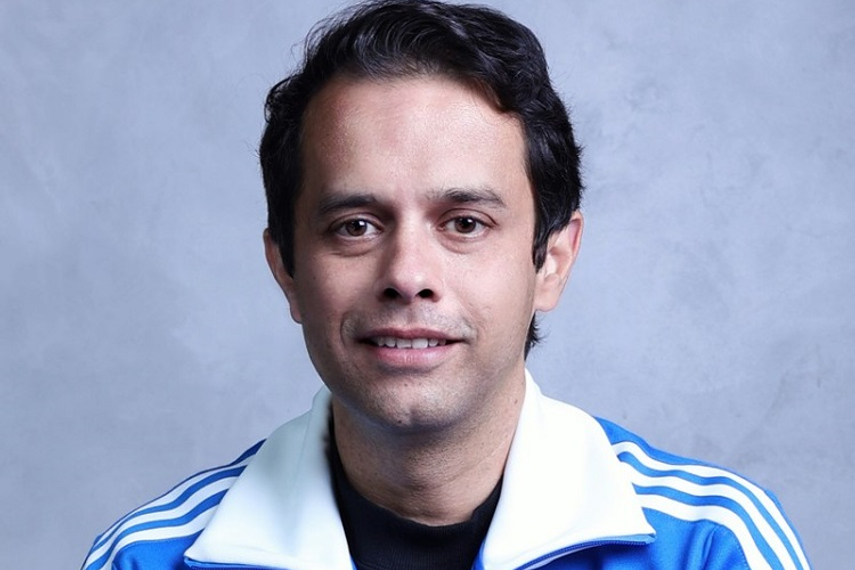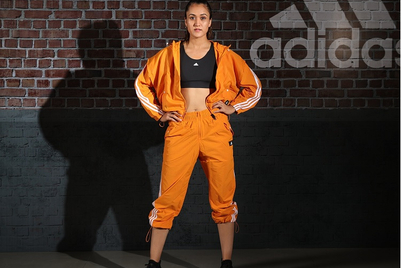
Earlier this year, adidas replaced Killer Jeans as team India's long-term apparel sponsor. Since then, considering we are in a World Cup year, the brand has leveraged the partnership with a film to announce the partnership, a jersey reveal and finally the anthem ahead of the tournament.
We caught up with Sunil Gupta, senior director, brand adidas – India, to learn more about the upcoming efforts, why it signed a five-year deal with the BCCI at a time when other merchandise partners have looked at shorter partnerships, its roster of agencies, and more...
The World Cup campaign - the film is out. What else can we expect around this?
The biggest moment for us was the launch of the World Cup film which went live on 20 September and it’s a bit of a coincidence that the ICC also went live with their anthem on the same day.
In these two weeks, we have got a pretty overwhelming response.
In the next 30-45 days, we can expect a well-rounded marketing plan. The idea for us to is keep leveraging multiple touchpoints and optimise reach and consumer engagement. This will be across digital, print and radio.
The film is not just a brand film, it’s a special audio platform that we have found and we are looking to take this across platforms such as Spotify, JioSaavn and YouTube. The end objective is to make sure the anthem can live beyond the World Cup and almost becomes a chant every time India plays and that was the North Star that we were getting towards.
We also have some interesting giveaways for our adiClub members and are offering money can’t buy experiences through World Cup tickets and signed merchandise.
How are you looking to leverage this association with the Indian cricket team? Other than the jerseys, are we looking at special World Cup merchandise too?
Yes, the film revealed the players wearing the tri-colour jersey and this is something we have done specifically for the World Cup.
For the consumers and our fans, we have a limited edition jersey of which we’ll sell 2,023 units. Each jersey will be marked with a unit so it becomes an interesting collectible and will go live by the weekend. We are also creating limited edition footwear where on each of the three stripes we’ll have 1983, 2011 and a blank blue stripe with an insert which says 2023, in case we win the World Cup.
The travel and training tees will start hitting the market in the next 10-15 days too.
You rolled out your film on the 20 September, two weeks before the tournament started. Was this kept in mind considering the barrage of films expected to break during the World Cup and a way of breaking the clutter or can that be broken by creativity alone?
The creative message is extremely important and matters. It was a conscious decision to release the campaign two weeks before the World Cup and we wanted fans to build on the anthem and get them to talk about it.
What matters most though is the content. We came across this powerful piece – the three forces coming together which are the environment (the World Cup), the fan and the brand. When three of these forces come together, at the cusp of it magic happens. We chanced upon this powerful insight and that’s where ‘3kadream’ (the team of three) was born.
What’s going to help break the clutter is that this is more than a campaign and it’s a movement for the entire nation to dream boldly. It’s hit the right chord with the consumers and the audiences. We realised there’s an unquenched desire in every Indian’s heart to go out and support the team to take India to its third ODI World Cup win.
You've partnered with Creativeland Asia for this campaign. We also had the announcement video which was created by Fundamental and we’ve some piece of work recently by Famous Innovations. Could you explain this approach to us?
At the end of the day what matters most for us is content. We had an opportunity around the World Cup with two campaigns and we opened them out as projects and we invited agencies to pitch for them.
After Nike, the Indian cricket team hasn't had a long-term kit partner. This is almost a five-year deal, which is relatively longer than their last few associations. What made this attractive for Adidas?
We are strong believers that we need to partner with the right enterprises to ensure we get to places we individually can’t. The four-and-a-half-year opportunity with the BCCI and that’s something we cherish. All our partnerships, whether it’s with Rohit (Sharma), Deepika (Padukone) or Ranveer (Singh), have gone beyond time. We look at and believe in long-term partnerships with the people we work with.
Specifically, around the BCCI and cricket, as a credible sports brand, it is our responsibility to get fans closer to the sport. Through our collaborative approach with the BCCI, we wanted to leverage the biggest passion point of the country. We know that in India, cricket is not a sport, it’s a religion. This gives a fantastic opportunity to drive reach and awareness for our brand in India and what better platform than cricket?
Back in 2009, Adidas signed Sachin Tendulkar as a brand ambassador and used the brand sticker on his bat at a time when Nike was the apparel sponsor for India. The marketing head had called that the ‘most aspirational place to be in cricket’. Given the current situation, would you look at being on the bats of brand ambassadors?
We have a decent roster of cricketers in Rohit (Sharma), Kuldeep Yadav, Ravindra Jadeja, Shardul Thakur and Renuka (Singh) on the women’s side. We want to sign more cricketers as we expand our presence in cricket. But in terms of sponsorships on bats, it’s something we’re not currently looking at.
Outside of cricket, Adidas has partnerships with athletes like Hima Das, Manika Batra and actor Deepika Padukone among others. Assuming performance is a given, what do you look for when looking for an ambassador?
Yes, it’s a given considering the calibre of these athletes. What we look at is the attitude. As a brand with the ‘impossible is nothing’ brand thought, we call ourselves rebellious optimists and we see possibilities where others see it to be impossible.
We work with partners that resonate with this attitude and have done this. For instance, we look at Mirabai (Chanu Saikhom Mirabai), who failed to lift in Rio but that didn’t stop her and four years later she won Silver in Tokyo.
In terms of the market size, how big is India? Would it be in the top 10 markets globally?
The fact that we’ve signed the Indian cricket team and the investment that goes with it signals India is an important market. We are making investments accordingly.
How big is the digital sales channel and how much does it contribute to overall sales?
We are progressively becoming more digital in terms of the channels we operate in. Over the last three years, we’ve seen our consumers move online and while Covid was a catalyst, we have seen this trend continue.
Do you see any challenges in this space? Are counterfeits the biggest of them all?
Firstly, I see an opportunity in this space. If you see the jersey culture in India, we are not there yet. If you see the amount of merchandise and how fans wear Premier League merchandise, there’s a long way to go. It’s not just worn in the stadium but as lifestyle and athleisure. That’s a massive opportunity for us to build and that’s why we have gone around to build the kind of products we have done.
Coming to counterfeits, yes it’s a challenge. When one walks into any stadium, there are vendors selling jerseys for INR 200-300. This impacts the experience of the consumer and we have to deal with that. To address this, we have created three different jerseys at three different price points which start at INR 999.
We are trying our bit to ensure that both the jersey culture and product counterfeits are addressed through the products that we put out.




.jpg&h=268&w=401&q=100&v=20250320&c=1)
_20230324021935.png&h=268&w=401&q=100&v=20250320&c=1)




